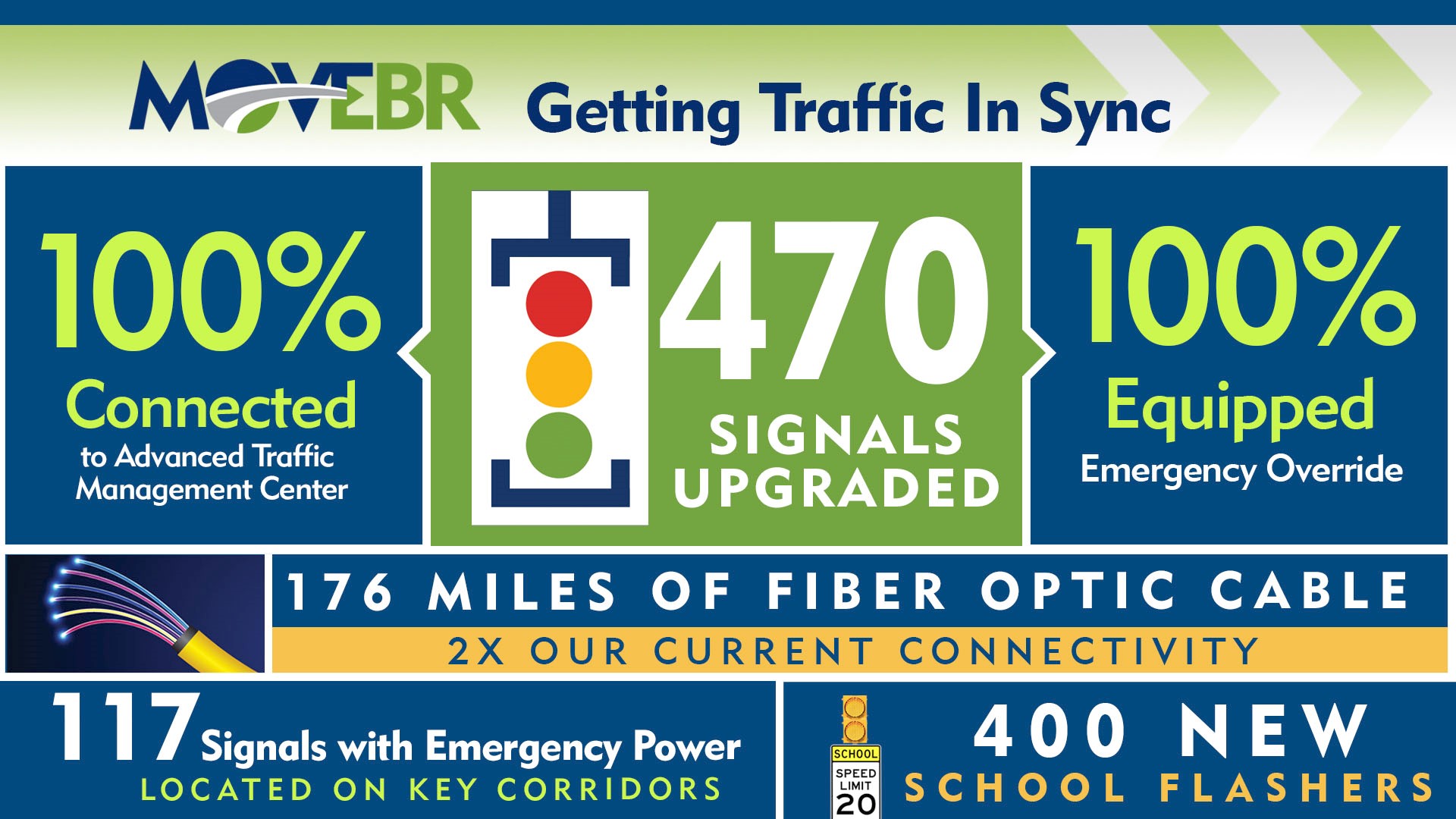MOVEBR is Getting Baton Rouge Traffic in Sync

At a time when traffic was lighter than normal during the COVID-19 crisis, the MOVEBR program began implementing traffic signal upgrades and laying fiber optic cable, a group of projects that will make Baton Rouge one of the world’s leading cities for traffic management technology.
“An important part of MOVEBR is a traffic management system that will give us 100% connectivity with our traffic signals, allowing us to adjust traffic flow at any time from our Advanced Traffic Management Center,” said Mayor Broome. “In this Digital Age, very few cities in the U.S. have fully connected traffic signal systems – I’m proud to say Baton Rouge is leading the way.”
The MOVEBR signal projects include equipment upgrades, software improvements and fiber optic cable that will connect 470 traffic signals throughout East Baton Rouge Parish, doubling the amount of cable connecting those signals to 176 miles.
The MOVEBR signal projects will also build an emergency grid by equipping 200 signals in key corridors with emergency power supplies that keep them operating for up to four hours if signals lose power during storm events or other incidents.
“The COVID-19 crisis presented an opening for us to start these signal projects, get work crews out at night when traffic was at a minimum and get these improvements underway,” Mayor Broome said. “While we have faced challenges in many areas during the past several months, we also saw a unique opportunity and our team responded.”
Along with the MOVEBR signal upgrades, the City-Parish is simultaneously equipping all 470 signals with new technology that allows emergency responders to pre-empt traffic signals, turning them green in advance of their approach, allowing the emergency responders to reach destinations quicker. This will not only reduce response time; it will also prevent accidents by clearing traffic ahead of emergency vehicles.
“By upgrading our traffic signal system, we’re spending wisely, and doing more with what we already have,” Mayor Broome explained. “This will allow our existing roads and intersections to perform beyond their current levels, while we also build significant projects that expand our capacity.”
Mayor Broome said the traffic signal improvements will mean less congestion, reduced travel times, faster emergency response, fewer traffic accidents, reduced emissions and gasoline usage, and better planning for large-scale events.
Depending on circumstances, the signal upgrades can reduce travel time by 10-50% and accidents by 30-50%. With the signal projects underway, the MOVEBR program has estimated all aspects will be fully implemented within 2-3 years.
Progress to Date
As of July 2020, signal equipment has been upgraded at 33 intersections with an additional 117 to be installed in the coming months. School flashers are also in the process of being replaced throughout the parish; 29 have been installed so far and an additional 171 will be complete by the time school opens this fall. The remaining 200 flashers will be replaced next year. Construction plans for the initial fiber contract are complete and installation is set to begin in late summer. Fiber connecting all 470 signals should be in place within 2 years. The deployment of the Uninterruptible Power Systems (UPS) equipment will also begin this fall.
Media inquiries:
Mark Armstrong
Chief Communications Officer
maarmstrong@brla.gov
Desk: 225-389-7957
Mobile: 225-505-2520
